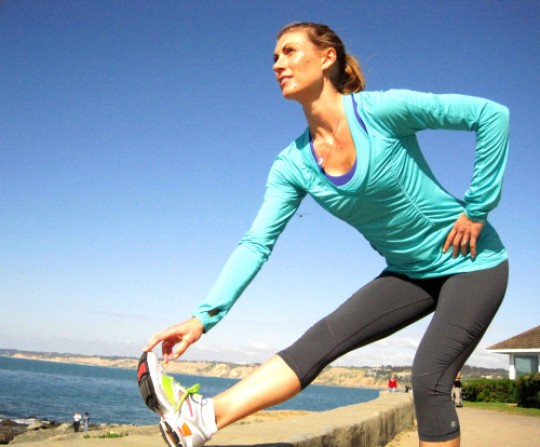A conversation about the merits of stretching
A conversation about the merits of stretching
“A life-long runner, I have spent my fair share of time in physical therapists’ offices seeking treatment for fitness-related injuries. Often during these visits, health-care providers assess my flexibility, deem it unsatisfactory and recommend a variety of stretches to further protect my muscles, tendons and joints from harm. But over the years, several studies have suggested that stretching may not actually help prevent injuries and the contradictory findings have left me with a lot of questions.
To get some answers I turned to Michael Fredericson, MD, who has served as the head team physician with the Stanford Sports Medicine Program since 1992. In this two-part Q&A, Fredericson discusses the role of flexibility in injury prevention and fitness performance and what the scientific evidence indicates about the effectiveness of stretching.
From a biomechanics point of view, how does flexibility influence athletic performance and help reduce the potential for injury?
It is difficult to make a vast generalization about the impact of flexibility because of the broad scope of biomechanical stresses and physical requirements throughout various athletic endeavors. For example, functional flexibility for a hurdler requires greater lengthening of the hamstring and a greater range of motion than for distance running. But in general the concern is when stretching increases a person’s flexibility beyond what is required for a specific motion.
Excessive flexibility may impair performance in sports where a high degree of flexibility is not required. For example, runners with less flexibility are actually more efficient at running. One example in a study involving 100 people, researchers evaluated participants’ flexibility with 11 different tests and then measured their efficiency while walking and running. Results showed, participants who were the most flexible expended 10 to 12 percent more energy to move at the same speed as compared with those that were the least flexible.
In everyday life, individuals maintain flexibility in a specific joint by using it. As we age, decreased activity and lack of use of a joint leads to reduced flexibility. The same is true for athletes. Participating in the sport itself provides the stimulus required to maintain their necessary range of motion. So, in many sports it is more desirable to achieve the required range of motion through specific actions that simulate the movements of the sport, rather than with prolonged stretching. Intense stretching could result in the range of motion exceeding what is needed for athletes to compete and consequently diminishing their performance.
There is an ongoing debate on if static stretching, where you hold a position for 20-30 seconds, is beneficial. How effective is this style of stretching?
Static stretching can increase muscle length but this doesn’t necessarily benefit all athletes equally. While some athletes such as gymnasts and swimmers may need to gain flexibility, being excessively flexible doesn’t benefit distance runners. Consider the standard hamstring stretch. Stretching your hamstring teaches the muscle to relax when the knee is fully extended. However, this doesn’t benefit runners. Instead, runners need to have their hamstrings stiff and activated when the knees are extended. Additionally, studies such as a recent USA Track and Field study (.pdf), have found that static stretching seems to have little benefit in terms of injury prevention, particularly against the overuse injuries common in running.
Another thing to keep in mind is that prolonged stretching, greater than 60 seconds, prior to athletic activity can reduce maximum force production with the loss of voluntary strength and muscular power. This effect can last up to one hour after stretching. For this reason, intense stretching is not typically recommended prior to competition. However many athletes, especially dancers and others participating in activities that require more than average flexibility, may still find shorter bouts of static stretching beneficial.
Salar Deldar, a third-year medical resident at Stanford, contributed information to this entry. The Q&A continues tomorrow with a discussion about the effectiveness of stretching before a workout vs. afterwards and the role of genetics in flexibility.
By Lia Steakley
Social Media Producer
Stanford University School of Medicine
Photo by lululemon athletica
###
* Stanford University Medical Center integrates research, medical education and patient care at its three institutions – Stanford University School of Medicine, Stanford Hospital & Clinics and Lucile Packard Children’s Hospital.
** The above story is adapted from materials provided by Stanford University School of Medicine
________________________________________________________________





















